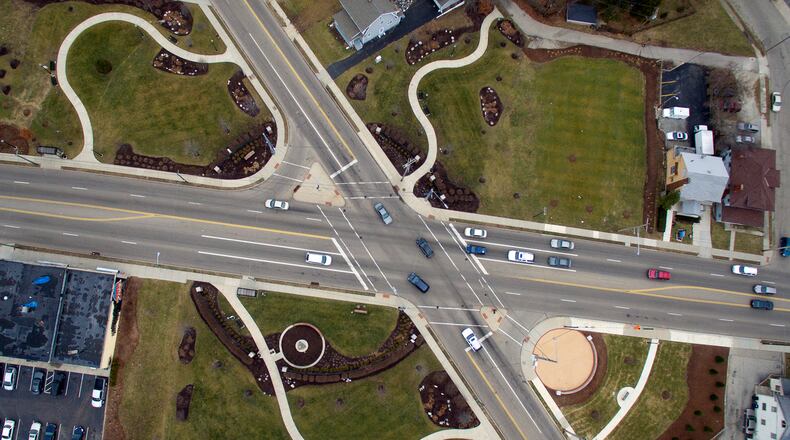While the study does not include the city of Dayton on its list of the biggest 100 cities, it does offer a look at economic measurements across more than 26,000 ZIP codes — and across the state of Ohio.
RELATED: A look at new jobs announcements so far in 2017
For example, in the Trotwood ZIP code (45426), the index shows 11.3 percent of residents there have no high school diploma or equivalent.
Trotwood has a 15.6 percent housing vacancy rate, according to the index. In the 45426 ZIP code, 33.6 percent of adults ages 25 to 64 are not currently employed, and the area has a 21.1 percent poverty rate.
The Trotwood ZIP code has seen a 18 percent drop in employment from 2011 to 2015, according to the study and an 18 percent drop in the number of businesses in that same time period.
RELATED: Dayton, Cincy team up to lure Amazon's $5B headquarters
Trotwood’s distress rank is 24,480 out of 26,126 ZIP codes, the index says.
For the central Dayton ZIP code of 45402, which includes downtown, much of the Oregon District and stretches west across the Great Miami River, 21.9 percent of adults don’t have a high school diploma, there’s a 28.7 percent housing vacancy rate, 52 percent of adults are not working and there’s a poverty rate of 46.3 percent, according to the study.
That ZIP code ranks 24,848 out of 26,126 ZIP codes.
In the Centerville ZIP code of 45459, by contrast, there’s a poverty rate of 4.8 percent and that ZIP code ranks much higher — 4,099 out of 26,126.
Beavercreek has an 11.3 percent poverty rate, and that ZIP code (45431) tanks at 7,989 nationally.
RELATED: Local manufacturers open their doors to recruit next workforce
“The challenge of reconnecting distressed communities is urgent and complex — especially so for policymakers,” the Economic Innovation Group said in a statement. “Fortunately, hard work, ingenuity, and entrepreneurial energy can be found in every community in the country. Policymakers should focus on empowering those forces to rekindle the grassroots economic growth that made this country the world’s leading economy in the first place.”
The Washington, D.C-based group describes itself as a “bipartisan public policy organization” focused on exploring economic and geographic data.
Butler County has a 13.9 percent poverty rate, the index shows, while Clark County has an 18.3 percent poverty rate. Montgomery County, meanwhile, has a 18.6 percent poverty rate.
As a whole, Ohio has a 15.8 percent poverty rate, with 28 percent of adults not working. The state overall ranks 2oth nationally in the number of “distressed” ZIP codes it has, the index said.
In general, the index finds that 52.3 million Americans live in economically distressed communities, the one-fifth of ZIP codes that score worst. By contract, more than 84 million Americans live in what the study calls “prosperous” communities.
About the Author

